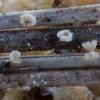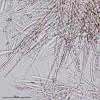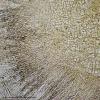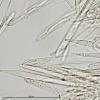
31-12-2025 19:27
Collected from loamy soil, at waterside (completel

30-12-2025 16:44
Pascal DucosBonjour,Une anamorphe rose stipitÊe, très nombre

30-12-2025 17:14
 Bernard CLESSE
Bernard CLESSE
Bonjour Ă toutes et tous,Pourriez-vous aider Albe

29-12-2025 10:15
Hulda Caroline HolteHello, I found and collected this propoloid ascom

30-12-2025 09:04
Hello.A Pyrenomycete sprouting sparsely but very d

29-12-2025 17:44
Isabelle CharissouBonjour,J'aimerais savoir si d'autres personnes au

12-11-2021 00:03
Lepista ZacariasHi everybody,A week ago in my fiels trip I noticed
Dasyscyphella acutipilosa?
Miguel Ăngel Ribes,
25-11-2010 00:54
 Buenas noches
Buenas nochesEsta vez con un verdadero ascomycete de menos de 0,5 mm de diĂĄmetro, ligeramente estipitado, sobre tallos herbĂĄceos no identificados, con el himenio amarillo y el exterior cubierto de pelos blancos. Ascas cilĂndrico-claviformes, acuminadas, biseriadas, con croziers y ĂĄpice azul con IKI. Esporas cilĂndrico-fusiformes, muy estrechas y con un septo central en la madurez. ParĂĄfisis lanceoladas, septadas, con pigmento amarillo en el ĂĄpice y el resto con aspecto marmĂłreo, ligeramente excedentes. Pelos finos, multiseptados, rectos, atenuĂĄndose hacia el ĂĄpice, lisos y con grandes cristales distribuidos de forma irregular, sobre todo en la parte basal. ExcĂpulo ectal angular.
___________________________________________________
Good night
Now with a real ascomycete less than 0.5 mm, slightly stipitate, on unidentified herbaceous stems, with yellow hymenium and covered with white hairs. Asci cylindrical-clavate, acuminate, biseriate, with croziers and blue apex with IKI. Spores cylindrical-fusiform, very narrow, with a central septum at maturity. Paraphyses lanceolate, septate, with yellow pigment in the apex and the rest with marbling, slightly protruding. Fine hairs, multiseptate, straight, fading towards the apex, smooth and with large and irregularly distributed crystals, especially in the heel. Ectal and medular excipulum angular.
Spores measurement:
(11.3) 12.5 - 18.1 (19.1) x (1.7) 1.9 - 2.6 (2.8) Âľm
Q = (4.7) 5.4 - 8 (9.3) ; N = 66
Me = 15 x 2.3 Âľm ; Qe = 6.7
Asci measurement:
(59.2) 60.1 - 73.5 (83.2) x (4.3) 4.9 - 6.2 (6.8) Âľm
N = 35; Me = 67.5 x 5.5 Âľm
Thank you,
Miguel Ăngel
Miguel Ăngel Ribes,
25-11-2010 00:58
Miguel Ăngel Ribes,
25-11-2010 00:59
Miguel Ăngel Ribes,
25-11-2010 00:59
Hans-Otto Baral,
25-11-2010 09:28

Re:Dasyscyphella acutipilosa?
Hi Miguel
the genus Albotricha is confirmed by molecular work as different from Dasyscyphella concerning A. acutipila and A. albotestacea. So my idea of Dasyscyphella seems wrong.
A. acutipila is strictly graminicolous, as far as I see, and now it depends on what your substrate is. I think this can be found out whether mono- or dicotyledonous, from the arrangement of vascular bundles (similar as with wood), by breaking the stem and looking on the cross-break.
I actually do not know these Albotricha species very well, and some are certainly misplaced in the genus. In my Dasyscyphella key I have listed D. acutipilosa under absent croziers, so this seems to exclude that species.
Zotto
the genus Albotricha is confirmed by molecular work as different from Dasyscyphella concerning A. acutipila and A. albotestacea. So my idea of Dasyscyphella seems wrong.
A. acutipila is strictly graminicolous, as far as I see, and now it depends on what your substrate is. I think this can be found out whether mono- or dicotyledonous, from the arrangement of vascular bundles (similar as with wood), by breaking the stem and looking on the cross-break.
I actually do not know these Albotricha species very well, and some are certainly misplaced in the genus. In my Dasyscyphella key I have listed D. acutipilosa under absent croziers, so this seems to exclude that species.
Zotto
Hans-Otto Baral,
25-11-2010 14:09

Re:Dasyscyphella acutipilosa?
Looked again at your images. With my key I clearly arive at Albotricha caduca. The substrate looks like narrow xerophytic monocot leaves being folded. A collection I have seen form the high Alps (Davos) was on Nardus. Maybe yours is Festuca or the like? Was it also from high altitude?
Zotto
Zotto
Miguel Ăngel Ribes,
25-11-2010 15:20

Re:Dasyscyphella acutipilosa?
Hi Zotto
I am not the collector of the species, I will ask those who collected it, together with previous on Echinospartum, more or less at the same place: the Pyrenees, Huesca, Spain, so relatively speaking, it is from "high altitude".
Is the Albotricha key in your DVD? I am not capable to find it.
I have found this key in the internet, but I do not understand the languaje, sorry:
https://docs.google.com/viewer?url=http://www.mycokey.com/MycokeyDK/DKkeysPDFs/Hyaloscyphaceae.pdf&pli=1
Thank you very much
I am not the collector of the species, I will ask those who collected it, together with previous on Echinospartum, more or less at the same place: the Pyrenees, Huesca, Spain, so relatively speaking, it is from "high altitude".
Is the Albotricha key in your DVD? I am not capable to find it.
I have found this key in the internet, but I do not understand the languaje, sorry:
https://docs.google.com/viewer?url=http://www.mycokey.com/MycokeyDK/DKkeysPDFs/Hyaloscyphaceae.pdf&pli=1
Thank you very much
Marja Pennanen,
25-11-2010 16:12
Re:Dasyscyphella acutipilosa?
Hello.
I'll try to translate the description of A. caduca:
Sp. 10-15 x 2,5-3,5 Âľm. Frl. stilkede; skive 0,5-0,8 mm bred, gullig til orange; rand hvid-
hüret; sp. kølleformede, encellede; sÌkke 55-75 x 5,5-7,2 ¾m; parafyser lancetformede,
3-4 Âľm brede, 20-30 Âľm udragende; hĂĽr 130-210 x 3,5 Âľm, tilspidsede, tyndvĂŚggede,
flercellede, glatte eller med fü, løse korn; pü grÌsser
Spores 10-15x2,5-3,5 Âľm. Fruitbody stipate, cup 0,5-0,8 mm wide, yelloish to orange, margin white haired; spores clavate?, one celled, ascus 55-75x5,5-7,2, paraphyses lanceolate, 3-4 Âľm wide, 20-30 Âľm exeeding the asci, hairs 130-210x3,5 Âľm, pointed, thin-walled?, septate, smooth or with some, easily loosen granules; on grasses.
My danish is not very good, but knowing a little bit of swedish helps ;)
The snow has fallen here: Marja
I'll try to translate the description of A. caduca:
Sp. 10-15 x 2,5-3,5 Âľm. Frl. stilkede; skive 0,5-0,8 mm bred, gullig til orange; rand hvid-
hüret; sp. kølleformede, encellede; sÌkke 55-75 x 5,5-7,2 ¾m; parafyser lancetformede,
3-4 Âľm brede, 20-30 Âľm udragende; hĂĽr 130-210 x 3,5 Âľm, tilspidsede, tyndvĂŚggede,
flercellede, glatte eller med fü, løse korn; pü grÌsser
Spores 10-15x2,5-3,5 Âľm. Fruitbody stipate, cup 0,5-0,8 mm wide, yelloish to orange, margin white haired; spores clavate?, one celled, ascus 55-75x5,5-7,2, paraphyses lanceolate, 3-4 Âľm wide, 20-30 Âľm exeeding the asci, hairs 130-210x3,5 Âľm, pointed, thin-walled?, septate, smooth or with some, easily loosen granules; on grasses.
My danish is not very good, but knowing a little bit of swedish helps ;)
The snow has fallen here: Marja
Miguel Ăngel Ribes,
25-11-2010 20:21

Re:Dasyscyphella acutipilosa?
Hello Marja
Thank you for the translation. I think it do not fits exactly: ¿¿"spores clavate and one celled"??
Miguel Ăngel
Thank you for the translation. I think it do not fits exactly: ¿¿"spores clavate and one celled"??
Miguel Ăngel
Hans-Otto Baral,
25-11-2010 23:21

Re:Dasyscyphella acutipilosa?
I have two collections identifi9ed as A. caduca, one leg. et det. A. Raitviir. The spores in that were 15 x 3 Âľm, obtuse-cylindrical, the asci were with croziers.
The description of the other is here ( a few macros and hair micro is on the DVD, HB 7570):
On culms of Nardus stricta. Davos, Albula-Pass. Ap. 0,5-1,3mm, subsessile or with distinct short stalk, white. Asci *55-71 x 8.5-10 or 77-83 x 8 Âľm, apex conical, IKI 2-3bb Calycina-type, 8sp., with croziers. Spores *13-18 x 2.4-3.3 Âľm, Ălm.0-1 (a few small LBs near each end), elongate-cylindr., old 1-septate, -23.5Âľ long, often germinating by hyphae. Paraph. medium to strongly lanceolate, partly very acute, c. 10-15 Âľm projecting beyond living asci, *3.8-5.3Âľ wide, no content. hairs 100-127 or -160 x 3.5-4.3 Âľm, 8-10-celled, lower part thick, quite thin-walled, irreg. roughly warted & with abund. hyaline resin, no crystals, apex long tapering, */2-2.8 Âľm wide, upper 2-4 cells smooth somewhat longer than mid cells. Ect.exc. t. glob.-prism. firm-walled (*).
My Dasyscyphella (not Albotricha) key is here:
Zotto
The description of the other is here ( a few macros and hair micro is on the DVD, HB 7570):
On culms of Nardus stricta. Davos, Albula-Pass. Ap. 0,5-1,3mm, subsessile or with distinct short stalk, white. Asci *55-71 x 8.5-10 or 77-83 x 8 Âľm, apex conical, IKI 2-3bb Calycina-type, 8sp., with croziers. Spores *13-18 x 2.4-3.3 Âľm, Ălm.0-1 (a few small LBs near each end), elongate-cylindr., old 1-septate, -23.5Âľ long, often germinating by hyphae. Paraph. medium to strongly lanceolate, partly very acute, c. 10-15 Âľm projecting beyond living asci, *3.8-5.3Âľ wide, no content. hairs 100-127 or -160 x 3.5-4.3 Âľm, 8-10-celled, lower part thick, quite thin-walled, irreg. roughly warted & with abund. hyaline resin, no crystals, apex long tapering, */2-2.8 Âľm wide, upper 2-4 cells smooth somewhat longer than mid cells. Ect.exc. t. glob.-prism. firm-walled (*).
My Dasyscyphella (not Albotricha) key is here:
Zotto
Miguel Ăngel Ribes,
26-11-2010 01:05

Re:Dasyscyphella acutipilosa?
I think this description and your photos in de DVD fits better with my collection. Only the asci are slightly different: acuminate and less broad in my collection, but I have been reviewing my photos and perhaps the acuminate apex occurs only in the young and empty asci, and the conical apex occurs at maturity (see attached photo).
Paraphysis wide: (3) 3.2 - 5 (5.4) Âľm; Me = 4 Âľm
Paraphysis projecting beyond asci: (8) 8.3 - 14 (20.6) Âľm; Me = 11.2 Âľm
Hairs wide at the apex: (1.7) 1.9 - 3.1 (3.6) Âľm; Me = 2.3 Âľm
Thank you Zotto and Marja.
Miguel Ăngel
Paraphysis wide: (3) 3.2 - 5 (5.4) Âľm; Me = 4 Âľm
Paraphysis projecting beyond asci: (8) 8.3 - 14 (20.6) Âľm; Me = 11.2 Âľm
Hairs wide at the apex: (1.7) 1.9 - 3.1 (3.6) Âľm; Me = 2.3 Âľm
Thank you Zotto and Marja.
Miguel Ăngel
Hans-Otto Baral,
26-11-2010 10:34

Re:Dasyscyphella acutipilosa?
I do not know with which images you compared your acuminate asci. But the differenced to your new photo is simply that there are two living asci in the lower part above the paraphyses, and these are not acuminate because of the internal turgor.
Zotto
Zotto
Miguel Ăngel Ribes,
26-11-2010 11:46

Re:Dasyscyphella acutipilosa?
Ok, very clear your observation, I was comparing dead asci with living asci. So asci wide is bigger than my measurement. Sorry for my uselessness :(, I'm still learning to differentiate living and dead ;).
Thank you again,
Miguel Ăngel
Thank you again,
Miguel Ăngel
Miguel Ăngel Ribes,
02-12-2010 23:42

Re:Dasyscyphella acutipilosa?
Dear Zotto
Sorry for the delay to replying. Regarding the habitat of the species, we are not sure about the identification of the substrate, but a botanical specialist told us that it could be a Festuca, but without security.
Next time we will try to identify the plant species.
Thank you,
Miguel Ăngel
Sorry for the delay to replying. Regarding the habitat of the species, we are not sure about the identification of the substrate, but a botanical specialist told us that it could be a Festuca, but without security.
Next time we will try to identify the plant species.
Thank you,
Miguel Ăngel
Jorge Hernanz,
06-12-2010 16:25
Re:Dasyscyphella acutipilosa?
Bonjour Ă tous!
I'm one of the collectors and guilty of not knowing the substrate. The problem is that the substrate are plant debris brought by the wind and retained within the plant pillow. The remains could belong to a multitude of plants around the area. In following collections I'll try to compare the plant debris with the various flat substrate in the area...
Thanks a lot
Jorge
I'm one of the collectors and guilty of not knowing the substrate. The problem is that the substrate are plant debris brought by the wind and retained within the plant pillow. The remains could belong to a multitude of plants around the area. In following collections I'll try to compare the plant debris with the various flat substrate in the area...
Thanks a lot
Jorge











 13504.doc
13504.doc